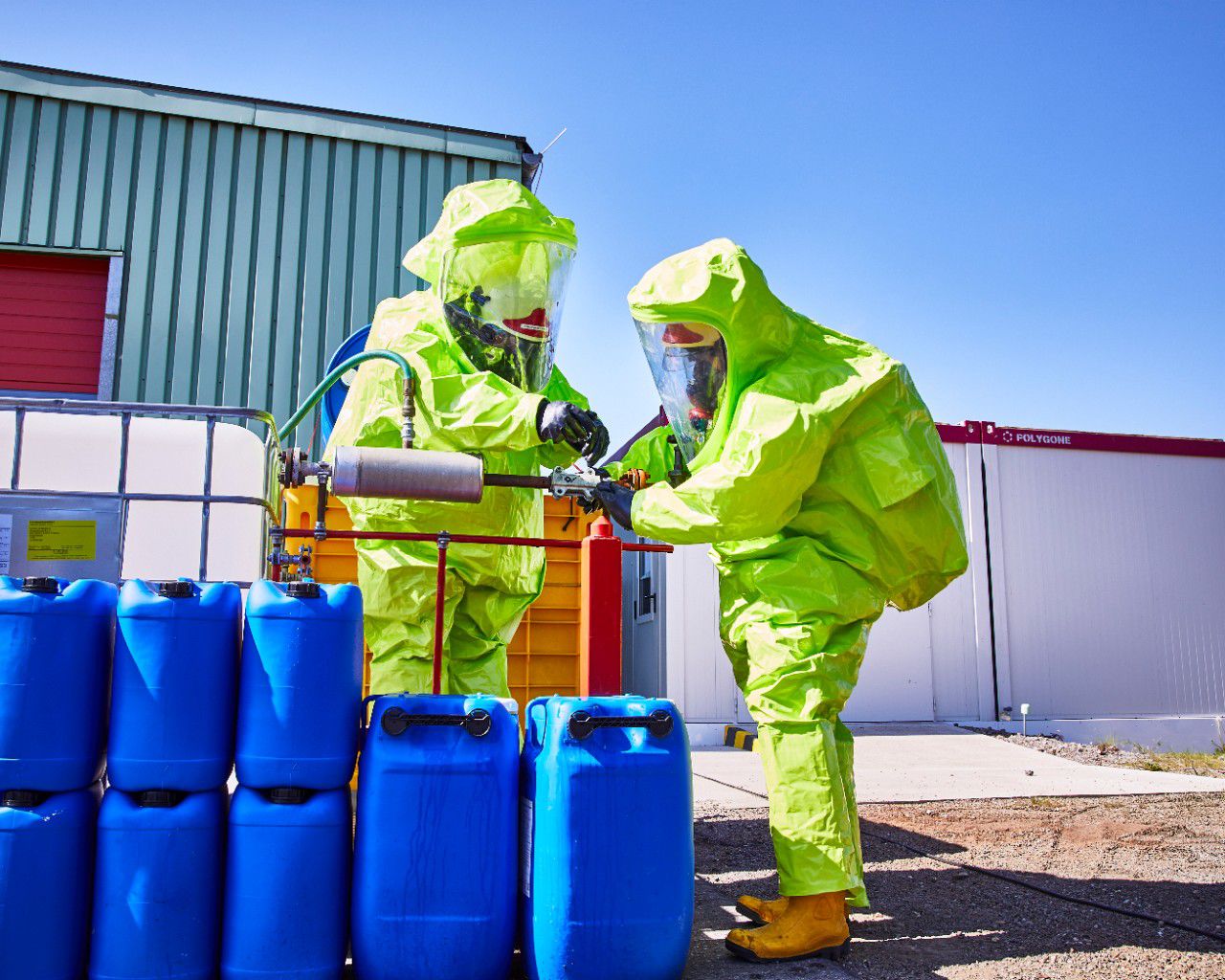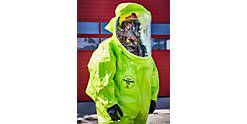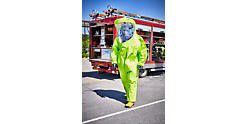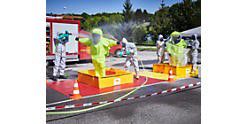Fire Brigade Tests Tychem® 10000 Fully Encapsulating Suit from DuPont

When DuPont Personal Protection in Luxembourg wanted to trial the effectiveness of its Tychem® 10000 fully encapsulating suit for emergency responders, it found the ideal opportunity right on its doorstep.
As a world leader in chemical protection clothing, DuPont Personal Protection holds safety and risk control as absolute priorities. The company’s production site in Luxembourg uses potentially hazardous materials such as ethanol, pentane and ammonia. It has a brigade of 19 firefighters – nine of whom are based permanently on site. Their mission, according to Rodney Faulk, Fire Chief of DuPont Luxembourg, is "to intervene quickly if an alarm goes off, which is thankfully very rare. Our prevention measures, in combination with DuPont's security procedures, mean the risks are significantly reduced."

Firefighters appreciated the excellent visibility provided by the Tychem® 10000 visor
Part of the fire brigade’s prevention regime involves staging a practice emergency event in order to ensure that the team is fully prepared for a real incident. The simulation of an ammonia leak, organized by the Works Safety Officer in close collaboration with the fire brigade, provided a perfect opportunity to field test the performance of Tychem® 10000, a gas-tight fully encapsulating suit designed by DuPont to meet the requirements of chemical protective clothing category III, type 1a-ET.

Tychem® 10000 fully encapsulating suits from DuPont have been put to the test by firefighters during a simulation exercise
Put to the test
Similar to many other manufacturing sites, DuPont uses ammonia as a refrigerant for the cooling of certain products during the production phase. Present in liquid form inside pipes, ammonia turns into a colorless gas on contact with air. In this gaseous state it is very corrosive and extremely toxic. Exposure to ammonia, whether by inhalation or contact, can lead to significant breathing difficulties, irritation or burns. In a confined space, an ammonia leak can quickly lead to fatality: as the recent tragic death of an engineer at a UK brewery in Northampton1 in an incident which left 22 others needing hospital treatment clearly demonstrates.

The suits easily withstand decontamination procedures following a successful emergency simulation
The emergency scenario simulation for the DuPont fire brigade is an ammonia leak found at duct level. The alert triggers implementation of a response plan in order to plug the leak as soon as possible and to establish a safety perimeter around the sector concerned. Once the ammonia supply valve has been isolated, it is time for the rescue team to move in.
This is the point at which Tychem® 10000 suits are put to the test. With oxygen bottles strapped to their backs, the emergency responders don the suits. One of the firemen wears the Tychem® 10000 614T model with front entry while a second fireman tries out the Tychem® 10000 615T model with back entry.
Offering a high level of protection against approximately 300 liquid chemicals, toxic and corrosive solids and gases2, Tychem® 10000 has a permeation resistance of more than eight hours to gaseous ammonia. This high performance far exceeds real-life exposure times and guarantees that the emergency services can intervene safely and effectively.
The emergency response to the simulation takes just 10 minutes to complete. It consists of an initial assessment to establish the scale of the breach and the diameter of the damaged pipe. Then the firefighters apply a steel cuff to seal the leak. The operation is carried out without difficulty and with the greatest precision, thanks to the Tychem® 10000 large transparent visor, which offers a panoramic field of vision.
Once the leak is repaired, the emergency team scrupulously follows a decontamination procedure. Protected by a Tychem® 6000 suit and a filter mask, a brigade firefighter hoses down the 10000 being worn by each responder with a water jet containing a special decontaminant. In a second airlock is a bag in which the contaminated garment can be contained. The firefighter wearing the Tychem® 10000 suit undresses with the aid of two colleagues before moving into a clean zone. The bag containing the contaminated suit is then collected by a company specializing in the treatment of hazardous waste.
Firefighter’s verdict
"Despite the oxygen bottle on our back, putting the suit on was easy thanks to the large front or back entry. In addition to the proven barrier provided by the Tychem® fabric, design features like the gas-tight zipper, double hook-and-loop closure, double-glove system and built-in socks really do give you confidence," reports Rodney Faulk.
He concludes: "The material is robust yet flexible enough to enable us to work as comfortably as possible. In fact, the suit is no heavier than the outfits we wear when fighting fires. Above all, Tychem® 10000 allows us to stay calm because we know we are protected, however difficult or delicate the task may be."
In addition to the conclusive results of independent laboratory tests carried out on Tychem® 10000 suits, the ammonia leak simulation with the fire brigade at DuPont Luxembourg demonstrates to all users that they can continue to trust the reliability of DuPont Personal Protection protective clothing.
For further information, please visit: ipp.dupont.com or safespec.dupont.com